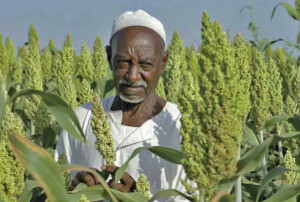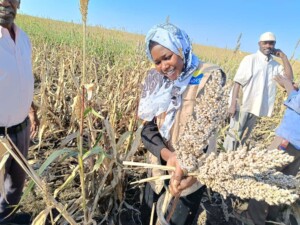Floods cause ‘catastrophic devastation’ in Sudan’s Nile valley
Floods have caused what local authorities described as ‘catastrophic devastation’ in White Nile state, and extra boats have been deployed on the river to evacuate people who have been stranded by floodwater since the beginning of the week. Official sources say that the main stream of the Nile at Atbara has risen since yesterday, but is still almost a metre below 2020 flood levels.
 High water in the main stream of the Nile (File photo: SUNA)
High water in the main stream of the Nile (File photo: SUNA)
Floods have caused what local authorities described as ‘catastrophic devastation’ in White Nile state, and extra boats have been deployed on the river to evacuate people who have been stranded by floodwater since the beginning of the week. Official sources say that the main stream of the Nile at Atbara has risen since yesterday, but is still almost a metre below 2020 flood levels.
More than 1,800 families, estimated at 15,000 people, in 53 villages, have been affected by floods in El Jebelein locality in White Nile state. The director of the locality calling for urgent humanitarian intervention.
In a press statement yesterday, the director of El Jebelein locality El Waleed Amer described the humanitarian situation in the Jouda Administrative Unit as “catastrophic and beyond the capacity of the locality”.
He said that more than 53 villages and herder settlements in the south-eastern part of Jouda are experiencing a difficult situation due to torrential rains and floods, which led to the collapse of buildings and the death of livestock, in addition to damage to agricultural areas.
Amer added that additional river boats have been brought in to continue the evacuation of families surrounded by water since yesterday.
The daily report of Sudan’s Autumn Emergency Room via the official Sudan News Agency (SUNA) from Atbara, 300 kilometres north and downstream from Khartoum, where the Nile is joined by the Atbara river, says that the level of the main stream of the Nile was recorded today 15.25 meters, 16 centimetres higher than the yesterday, but 98 centimetres lower than the level measured last year.
The report says that the engineering efforts are continuing to strengthen the embankments and determine damages at the localities.
Heavy rains and flooding have affected over 88,000 people in 13 out of Sudan’s 18 states since the start of the rainy season in July, according to the Humanitarian Aid Commission (HAC). The water levels in the Nile River are above flood risk level in Khartoum, Ed Dein and Shendi stations, according to the Ministry of Irrigation and Water Resources, with several residential neighbourhood in the capital under water. The rain is forecast to continue this week.











 and then
and then